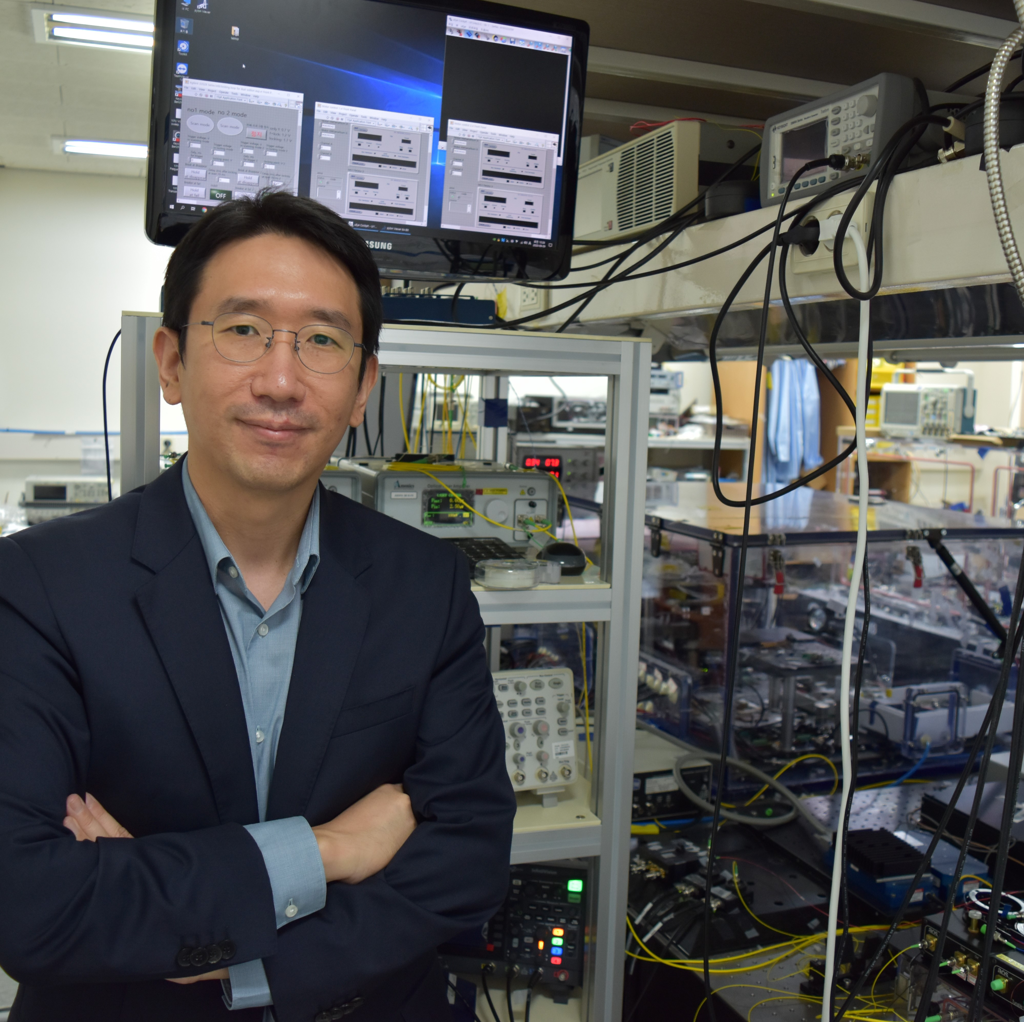Jungwon Kim
Korea Advanced Institute of Science and Technology (KAIST), Republic of KoreaFor pioneering contributions to ultralow-noise optical frequency combs and their applications including large-scale timing synchronization and ultrafast time-of-flight sensors.

Jungwon Kim’s father was a chemist, specifically a spectroscopist, though it would take some time before Jungown recognized this distinction. As a child, he thought his father’s tools and equipment were “cool and esoteric.” When he visited that lab, he started to feel that science could be fun. Once Jungwon realized what those experiments were actually about, he reflects that these were his first interactions with optics and laser science, forming the basis of his future career.
He began his journey studying electrical engineering in college and found a strong interest in electrons. His first exposure to photonics was in a course taught by the late Byoungho Lee, which initiated Jungwon’s path toward optics as a career. After his undergraduate study and three years working in a fiber optics start-up company, he moved to the United States for graduate work at the Massachusetts Institute of Technology. Here, he learned about ultrafast optics for the first time. The field was rapidly developing, with recent insights into optical frequency combs and carrier-envelope phase-stabilized ultrashort pulses, driving Jungwon’s curiosity to move forward in this area.
During his PhD work, Jungwon found a lifelong mentor in his advisor, Franz Kaertner. Together, they demonstrated the first femtosecond precision remote synchronization methods for ultrafast science facilities in 2008. Since then, this technology has been used at major accelerator-based light sources around the world. As a mentor, Franz was supportive of Jungwon’s ideas and served as a wonderful role model for the young scientist. In addition to Franz, a diverse group of people contributed to Jungwon’s success. He reflects, “It is important to keep an open mind and listen to others when you need to make an important decision.”
Since completing his PhD, Jungwon has established his own research group at the Korea Advanced Institute of Science and Technology (KAIST) with a focus on timing. At first, his group worked on the timing problems with frequency combs, ultimately showing the first quantum-limited, sub-100-attosecond-jitter fiber combs in 2011. Today, they focus on the precision timing applications of such ultralow-noise combs. Jungwon shares some examples: ultrafast and precise time-of-flight (TOF) sensing and dynamic 3D imaging, ultralow-noise microwave signal generation, electronic chip clocking, and radio astronomy telescope operation.
This field has been growing over the last decade, so it has been a rich exploration for Jungwon. He has enjoyed working in optics and photonics for its wide-ranging and real-world applications. He gets to work with all kinds of different scientists, like radio astronomy researchers installing frequency comb systems at their telescope sites and semiconductor industry professionals looking for metrology solutions. He comments, “I believe that it is the unique advantage of working in optics and photonics – it is a truly enabling technology capable of solving a wide range of problems.”
With such an illustrious career in optics and photonics, Jungwon has long understood the importance of his Optica membership. His first journal paper was published in Optics Letters, and his first conference presentation was at CLEO. He feels honored to be a part of the high standards of Optica through his service as topical editor of Optics Letters and as a frequent committee member.
Photo provided by: Jungwon Kim
Profile written by Samantha Hornback
